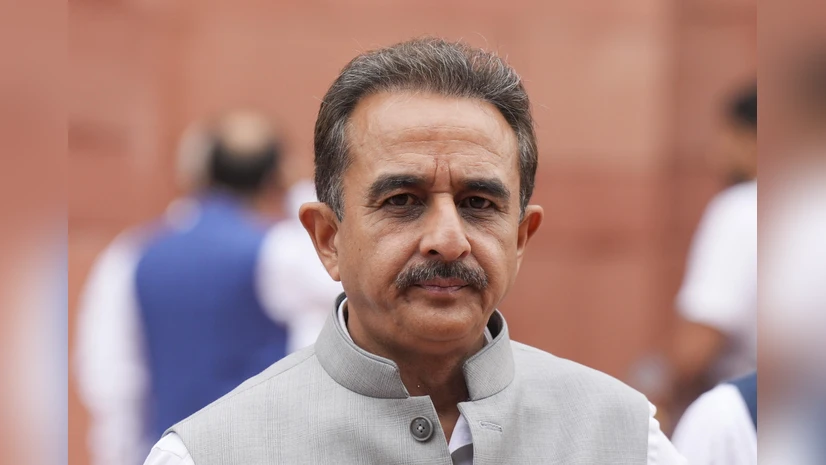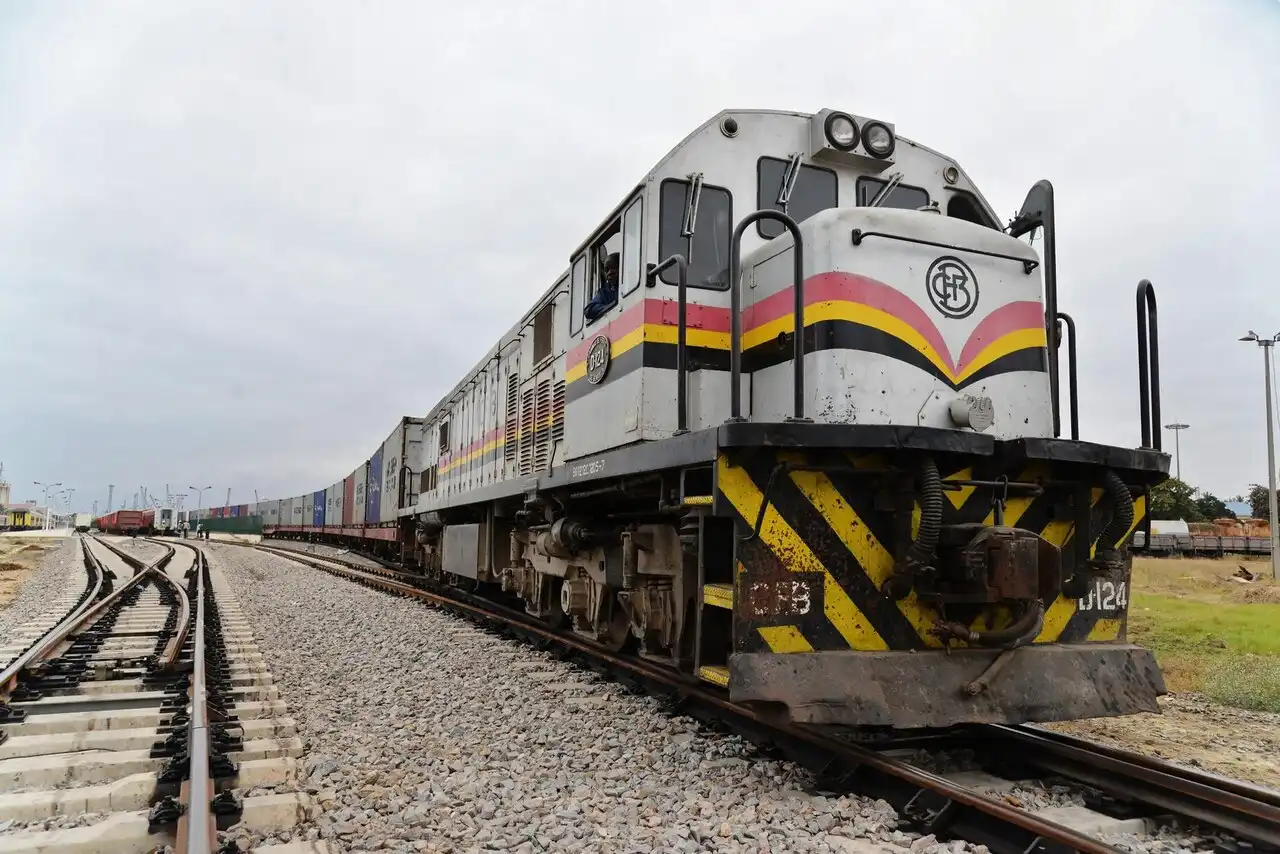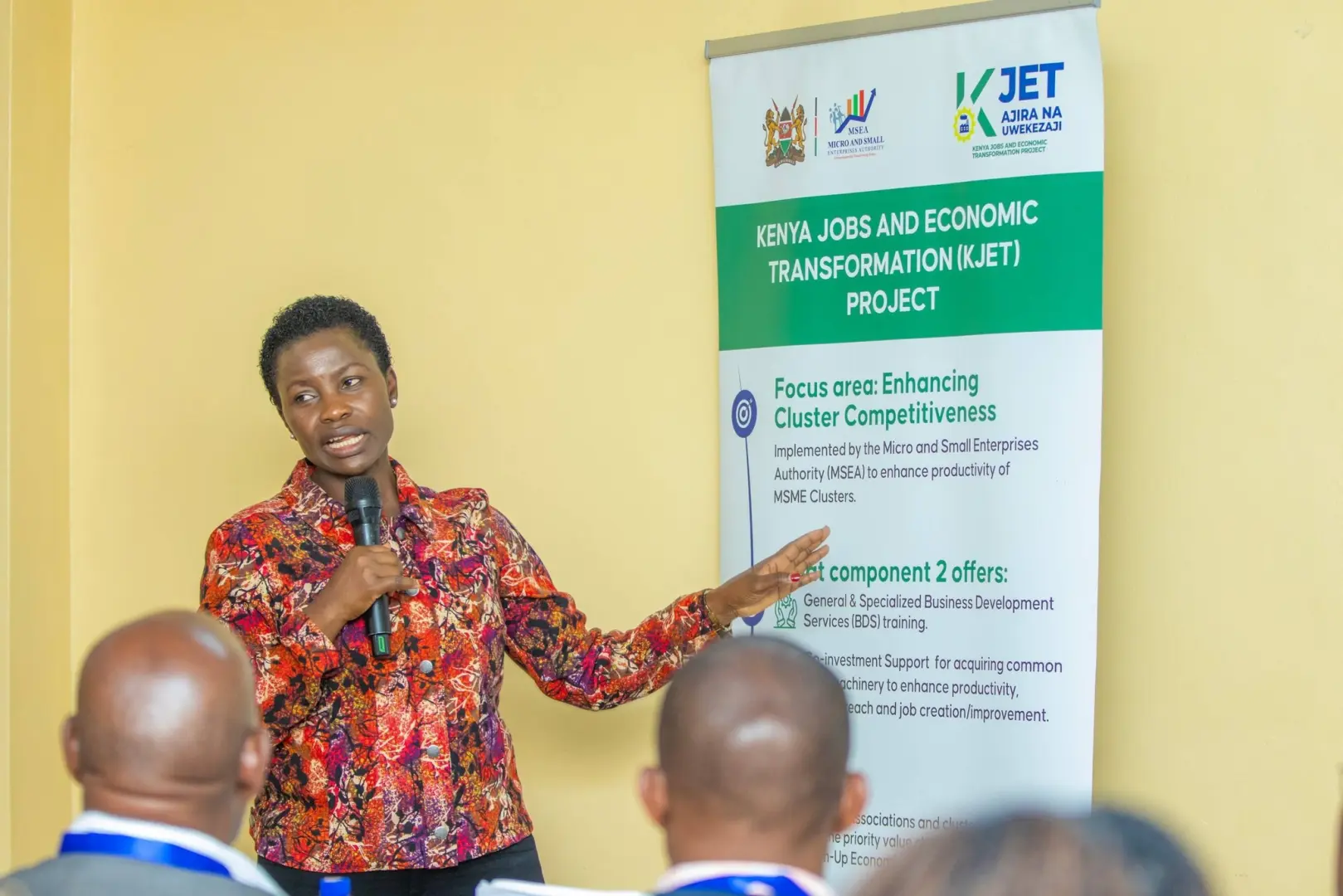India-Africa bilateral trade has crossed the historic milestone of USD 100 billion in 2024-25, Union Minister Kirti Vardhan Singh announced at the 20th CII India-Africa Business Conclave in New Delhi, marking a significant achievement in one of the world’s most promising South-South partnerships. The announcement underscores India’s emergence as a major economic partner for Africa, with New Delhi now ranking among the top five investors in the continent.
Build the future you deserve. Get started with our top-tier Online courses: ACCA, HESI A2, ATI TEAS 7, HESI EXIT, NCLEX-RN, NCLEX-PN, and Financial Literacy. Let Serrari Ed guide your path to success. Enroll today.
From Partnership to Co-Creation: A Strategic Evolution
The achievement of the USD 100 billion trade milestone represents far more than statistical success—it signals a fundamental evolution in India-Africa relations from traditional project-based partnerships to what Singh described as “Co-creating a Shared Future.” This transformation reflects both nations’ growing confidence in their ability to shape global economic and political narratives independently of Western-dominated frameworks.
“India’s bilateral trade with Africa has crossed the magical figure of USD 100 billion in 2024-25 compared to USD 56 billion in 2019-2020,” Singh announced, highlighting the remarkable 78% growth over just five years. This acceleration has occurred despite global economic disruptions from the COVID-19 pandemic, supply chain challenges, and geopolitical tensions, demonstrating the resilience and complementarity of the India-Africa economic relationship.
The trade expansion is supported by cumulative investments exceeding USD 75 billion from 1996-2024, positioning India among the top five largest investors in Africa alongside China, the United States, European Union, and United Kingdom. This investment pattern reflects a sustained commitment that spans multiple Indian governments and demonstrates the strategic priority that Africa holds in India’s foreign policy calculations.
Beyond Numbers: India’s Comprehensive Development Partnership
The USD 100 billion trade figure represents only one dimension of a multifaceted partnership that encompasses development cooperation, capacity building, technology transfer, and humanitarian assistance. India has extended concessional loans worth over USD 12 billion and USD 700 million in grant assistance for projects across Africa, demonstrating a development philosophy that emphasizes mutual benefit rather than dependency.
The human dimension of this partnership is equally significant. India has offered 50,000 scholarships for African youth, of which more than 42,000 have already been utilized, creating a new generation of Africa-India knowledge bridges. These educational exchanges have fostered deep people-to-people connections that transcend commercial relationships and create lasting foundations for cooperation.
The scope of India’s engagement extends to cutting-edge sectors including digital healthcare and education. India’s e-VidyaBharti and e-ArogyaBharti networks, launched in 2019, have enabled more than 15,000 youth from 22 African countries to pursue degree and diploma courses through tele-education and tele-medicine, pioneering new models of cross-continental knowledge sharing.
Strategic Context: G20 Membership and Global South Leadership
The trade milestone occurs against the backdrop of India’s successful championing of African Union’s permanent membership in the G20 during its presidency in 2023. This diplomatic achievement, personally driven by Prime Minister Modi through direct outreach to G20 leaders, demonstrates India’s commitment to elevating Africa’s voice in global governance structures.
The inclusion of the African Union as a permanent G20 member was announced at the G20 summit in New Delhi on September 9, 2023, making it the second regional bloc after the European Union to achieve permanent status. The decision was widely celebrated as correcting a historical imbalance in global economic governance, given that Africa, despite representing 55 countries and over 1.3 billion people, had only South Africa as representation in the G20.
“We put emphasis on Africa’s rightful place at the global high table,” Singh emphasized, reflecting India’s broader strategy of positioning itself as the leader of the Global South and champion of developing nations’ interests in international forums.
Trade Structure and Sectoral Analysis
The India-Africa trade relationship demonstrates a sophisticated evolution beyond traditional commodity exchanges toward value-added sectors and technology partnerships. While Africa continues to supply India with essential raw materials including oil, gas, minerals, and agricultural products, the relationship increasingly encompasses manufactured goods, services, and technology solutions.
India’s Duty Free Tariff Preference Scheme provides duty-free access to 98.2% of India’s tariff lines, benefiting 33 least developed African countries. This preferential access has significantly boosted African exports to India and demonstrates India’s commitment to supporting Africa’s integration into global value chains.
The African Continental Free Trade Area Agreement, which came into force in 2021, presents new opportunities for Indian companies to establish continental operations and leverage Africa’s growing internal market. Singh expressed optimism that this agreement would further boost Indian companies’ footprint across the continent, potentially creating new pathways for the next phase of trade expansion.
Commerce Minister Piyush Goyal has set ambitious targets for the partnership, proposing to double trade volume to USD 200 billion within seven years, aiming for 10% annual growth. This target reflects confidence in the partnership’s potential and India’s assessment of Africa’s emerging economic opportunities.
Technology and Digital Transformation: The New Frontier
One of the most significant aspects of the evolving India-Africa partnership is the emphasis on digital transformation and technology transfer. The Pan African e-Network project, often described as Africa’s largest digital initiative, connects 54 African countries to India and to each other through satellite and fiber-optic infrastructure.
This ambitious project, launched in 2009, provides telemedicine and tele-education services across 53 African countries, demonstrating India’s capability to deploy large-scale technological solutions for development challenges. The project represents a unique model of technology cooperation that emphasizes accessibility and local capacity building rather than technological dependency.
India’s digital transformation experience, where the digital economy grew 2.4 times faster than the overall economy between 2014 and 2019, offers valuable lessons for African countries pursuing similar objectives. The Digital India initiative’s framework, combining public infrastructure, private innovation, and policy coordination, provides a replicable model for African digital development.
Emerging areas of technological collaboration include artificial intelligence, blockchain, Internet of Things, and renewable energy technologies. India’s expertise in cost-effective technology solutions, combined with Africa’s growing digital infrastructure needs, creates significant opportunities for innovative partnerships that could leapfrog traditional development models.
Energy and Climate Cooperation: Building Sustainable Futures
The partnership increasingly focuses on sustainable development and climate resilience, reflecting both regions’ commitments to addressing climate change while pursuing economic growth. Singh highlighted India’s invitation to African nations to join the Coalition for Disaster Resilient Infrastructure and the International Solar Alliance, two Indian-led initiatives that address critical development challenges.
The International Solar Alliance, co-founded by India and France, has gained significant traction across Africa, where solar potential is enormous but underutilized. Indian companies are increasingly involved in solar projects across the continent, bringing cost-effective solutions and financing models that make renewable energy accessible to African countries.
India’s experience in large-scale solar deployment, including projects like the Rewa Ultra Mega Solar Park, provides practical models for African countries seeking to expand renewable energy capacity. The combination of Indian technical expertise and financing capabilities with African solar resources creates opportunities for transformative energy partnerships.
Ready to level up your career? Join our expert-led Online courses in ACCA, HESI A2, ATI TEAS 7, HESI EXIT, NCLEX-RN, NCLEX-PN, and Financial Literacy. At Serrari Ed, we turn potential into achievement. Start your journey today!
Historical Foundation and Cultural Connections
The contemporary partnership builds on deep historical connections dating to the independence movements of both regions. India’s support for African decolonization, combined with shared experiences of anti-colonial struggle, created emotional and political foundations that continue to influence contemporary relations.
The Indian diaspora in Africa, estimated at over 2.7 million people, serves as an important bridge between the two regions. These communities, established over generations, have deep roots in African countries and serve as informal ambassadors for India-Africa cooperation. Their business networks, cultural connections, and social integration provide unique advantages for expanding economic partnerships.
Cultural similarities, including family structures, social values, and development priorities, create natural affinities that facilitate cooperation. Both regions prioritize education, healthcare, and poverty alleviation, creating shared frameworks for development partnerships that Western donors may not fully understand or appreciate.
Challenges and Competitive Dynamics
Despite remarkable growth, the India-Africa partnership faces significant challenges, particularly competition from China’s much larger economic presence. China-Africa trade exceeded USD 250 billion in 2021, more than double the current India-Africa figure, while Chinese investment and lending to Africa far exceeds Indian levels.
China’s Belt and Road Initiative has financed major infrastructure projects across Africa, including railways in Kenya and Ethiopia, ports in Djibouti and Sri Lanka, and numerous roads, bridges, and power plants. While these projects have generated some criticism over debt sustainability and labor practices, they demonstrate the scale of commitment that China brings to Africa.
India’s approach emphasizes capacity building, technology transfer, and human development rather than large-scale infrastructure financing. While this model may be more sustainable and aligned with African development needs, it faces challenges in competing with China’s immediate infrastructure delivery and financing capabilities.
The involvement of Western countries in Africa, including the United States, European Union, and former colonial powers, creates additional competitive dynamics. The US-Africa Leaders Summit, EU-AU Summit, and other high-level engagements demonstrate continued Western interest in maintaining influence in Africa.
Future Pathways: Innovation and Integration
The achievement of the USD 100 billion trade milestone creates momentum for more ambitious goals and innovative partnership models. Several trends are likely to shape the next phase of India-Africa cooperation:
Financial Innovation: India is exploring new financial instruments including blended finance, diaspora bonds, and green bonds to mobilize private capital for African development. These tools could significantly expand the resources available for partnership projects while reducing risks for both public and private investors.
Manufacturing and Value Chains: The partnership increasingly focuses on manufacturing cooperation, with Indian companies establishing production facilities in Africa to serve both local and international markets. This trend supports Africa’s industrialization objectives while providing Indian companies with cost-effective production bases.
Healthcare and Pharmaceuticals: India’s position as the “pharmacy of the world” creates natural opportunities for expanding healthcare partnerships. The COVID-19 pandemic demonstrated both the potential and limitations of this cooperation, with India supplying vaccines and medicines to multiple African countries while facing capacity constraints during peak demand periods.
Education and Skill Development: The expanding scholarship programs and educational exchanges are creating new generations of Africa-India alumni who serve as bridges between the regions. These human connections may prove more valuable than commercial relationships in sustaining long-term partnership.
Regional Variations and Bilateral Relationships
While the aggregate USD 100 billion figure captures overall partnership success, the India-Africa relationship comprises diverse bilateral relationships with varying intensities and focus areas. Countries like South Africa, Nigeria, Kenya, and Egypt have particularly strong ties with India, while others have more limited engagement.
Regional economic communities in Africa, including ECOWAS, SADC, and EAC, provide frameworks for Indian engagement at the regional level. India’s approach of engaging simultaneously at continental (African Union), regional (RECs), and bilateral levels creates multiple pathways for cooperation and reduces dependence on any single institutional framework.
Nigeria, as Africa’s most populous country and largest economy, represents a particularly important partnership for India. Prime Minister Modi’s recent visit to Nigeria, where he received the Grand Commander of the Order of the Niger, demonstrates the strategic importance both countries place on their relationship.
Institutional Frameworks and Future Summits
The success of the trade relationship has occurred despite the absence of the India-Africa Forum Summit since 2015. The last IAFS was held in 2015, and the expected fourth summit has been repeatedly delayed due to various factors including the COVID-19 pandemic, African Union hosting responsibilities, and competing priorities.
The delay in convening IAFS-IV has been noted by African diplomats as reflecting India’s relatively lower prioritization of Africa compared to other relationships. In contrast, China, the United States, European Union, Turkey, and Russia have all held major summits with Africa in recent years, maintaining high-level political momentum.
The CII India-Africa Business Conclave, which recently celebrated its 20th edition, provides an important platform for business engagement and relationship building. However, the absence of head-of-state level summits limits the political momentum that could drive even more ambitious partnership goals.
Global South Leadership and Multipolarity
The India-Africa partnership increasingly positions itself within broader narratives of Global South cooperation and multipolarity in international relations. Both India and African countries seek to reduce dependence on Western-dominated institutions and create alternative frameworks for cooperation and development.
This positioning has gained renewed relevance with the changing global order, including the rise of China, renewed great power competition, and questions about the sustainability of Western-led globalization models. The partnership offers both regions opportunities to demonstrate alternative models of international cooperation based on mutual respect, shared development challenges, and complementary capabilities.
The success of initiatives like the African Union’s G20 membership demonstrates the potential for India and Africa to collaborate in reshaping global governance structures. Similar opportunities may exist in other international forums, including UN reform, international financial institution governance, and climate change negotiations.
Economic Implications and Development Impact
The USD 100 billion trade milestone has significant implications for both regions’ development trajectories. For Africa, expanded trade with India provides market diversification opportunities, technology access, and development financing alternatives to traditional Western or Chinese sources.
Indian investment in Africa has created jobs, built local capacity, and contributed to economic growth across multiple sectors. The emphasis on human development, education, and healthcare creates long-term benefits that extend beyond immediate commercial gains.
For India, the African relationship provides access to natural resources, expanding markets for Indian goods and services, and opportunities for Indian companies to gain international experience. The partnership also supports India’s broader foreign policy objectives of establishing itself as a responsible global power and leader of developing countries.
Looking Ahead: The Next Decade
As the India-Africa partnership celebrates the USD 100 billion trade milestone, attention turns to the next phase of growth and cooperation. The target of reaching USD 200 billion within seven years appears achievable given current growth trends and planned initiatives.
However, realizing the full potential of the partnership will require addressing several challenges:
- Infrastructure: Both regions need continued investment in transportation, communications, and energy infrastructure to facilitate expanded trade and investment.
- Institutional Capacity: African institutions need strengthening to absorb and effectively utilize increased cooperation, while Indian institutions must scale up their Africa engagement capabilities.
- Financial Systems: Improved financial connectivity, including expanded banking relationships and innovative financing mechanisms, could significantly reduce transaction costs and expand trade opportunities.
- Political Stability: Continued political stability in both regions is essential for sustaining long-term partnership growth and investor confidence.
Conclusion: A Partnership for the Future
The achievement of USD 100 billion in India-Africa trade represents more than a statistical milestone—it symbolizes the emergence of a new model of South-South cooperation that prioritizes mutual benefit, shared development, and technological innovation. The partnership has evolved from the traditional donor-recipient model toward genuine co-creation of solutions for shared challenges.
As Minister Singh emphasized, India and Africa are “shaping a strong partnership to co-create a shared future, built on mutual trust and collaborative efforts.” This vision reflects both regions’ growing confidence in their ability to chart independent development paths and contribute meaningfully to global prosperity and stability.
The success of the India-Africa partnership offers lessons for other South-South relationships and demonstrates the potential for developing countries to create alternative models of international cooperation. As both regions continue to grow and develop, their partnership may increasingly serve as a model for other emerging economy relationships and contribute to a more multipolar and equitable global order.
The USD 100 billion milestone is thus not an endpoint but a foundation for even more ambitious cooperation in the decades ahead. With continued commitment from both sides, the India-Africa partnership has the potential to become one of the most significant and transformative relationships of the 21st century, benefiting not only the two regions but contributing to global development and stability.
Ready to take your career to the next level? Join our Online courses: ACCA, HESI A2, ATI TEAS 7 , HESI EXIT , NCLEX – RN and NCLEX – PN, Financial Literacy!🌟 Dive into a world of opportunities and empower yourself for success. Explore more at Serrari Ed and start your exciting journey today! ✨
Track GDP, Inflation and Central Bank rates for top African markets with Serrari’s comparator tool.
See today’s Treasury bonds and Money market funds movement across financial service providers in Kenya, using Serrari’s comparator tools.
photo source: Google
By: Montel Kamau
Serrari Financial Analyst
28th August, 2025
Article, Financial and News Disclaimer
The Value of a Financial Advisor
While this article offers valuable insights, it is essential to recognize that personal finance can be highly complex and unique to each individual. A financial advisor provides professional expertise and personalized guidance to help you make well-informed decisions tailored to your specific circumstances and goals.
Beyond offering knowledge, a financial advisor serves as a trusted partner to help you stay disciplined, avoid common pitfalls, and remain focused on your long-term objectives. Their perspective and experience can complement your own efforts, enhancing your financial well-being and ensuring a more confident approach to managing your finances.
Disclaimer: This article is for informational purposes only and does not constitute financial advice. Readers are encouraged to consult a licensed financial advisor to obtain guidance specific to their financial situation.
Article and News Disclaimer
The information provided on www.serrarigroup.com is for general informational purposes only. While we strive to keep the information up to date and accurate, we make no representations or warranties of any kind, express or implied, about the completeness, accuracy, reliability, suitability, or availability with respect to the website or the information, products, services, or related graphics contained on the website for any purpose. Any reliance you place on such information is therefore strictly at your own risk.
www.serrarigroup.com is not responsible for any errors or omissions, or for the results obtained from the use of this information. All information on the website is provided on an as-is basis, with no guarantee of completeness, accuracy, timeliness, or of the results obtained from the use of this information, and without warranty of any kind, express or implied, including but not limited to warranties of performance, merchantability, and fitness for a particular purpose.
In no event will www.serrarigroup.com be liable to you or anyone else for any decision made or action taken in reliance on the information provided on the website or for any consequential, special, or similar damages, even if advised of the possibility of such damages.
The articles, news, and information presented on www.serrarigroup.com reflect the opinions of the respective authors and contributors and do not necessarily represent the views of the website or its management. Any views or opinions expressed are solely those of the individual authors and do not represent the website's views or opinions as a whole.
The content on www.serrarigroup.com may include links to external websites, which are provided for convenience and informational purposes only. We have no control over the nature, content, and availability of those sites. The inclusion of any links does not necessarily imply a recommendation or endorsement of the views expressed within them.
Every effort is made to keep the website up and running smoothly. However, www.serrarigroup.com takes no responsibility for, and will not be liable for, the website being temporarily unavailable due to technical issues beyond our control.
Please note that laws, regulations, and information can change rapidly, and we advise you to conduct further research and seek professional advice when necessary.
By using www.serrarigroup.com, you agree to this disclaimer and its terms. If you do not agree with this disclaimer, please do not use the website.
www.serrarigroup.com, reserves the right to update, modify, or remove any part of this disclaimer without prior notice. It is your responsibility to review this disclaimer periodically for changes.
Serrari Group 2025
















